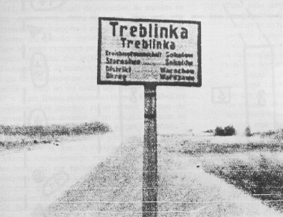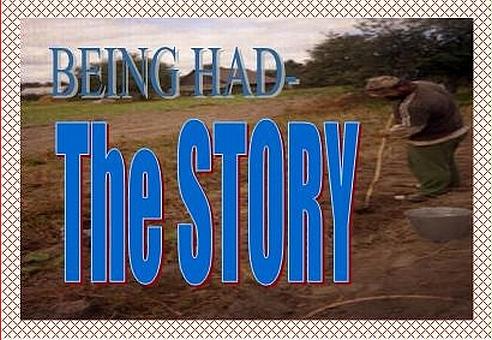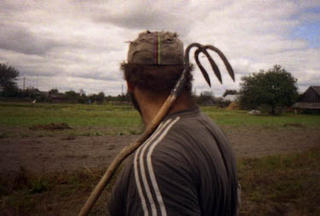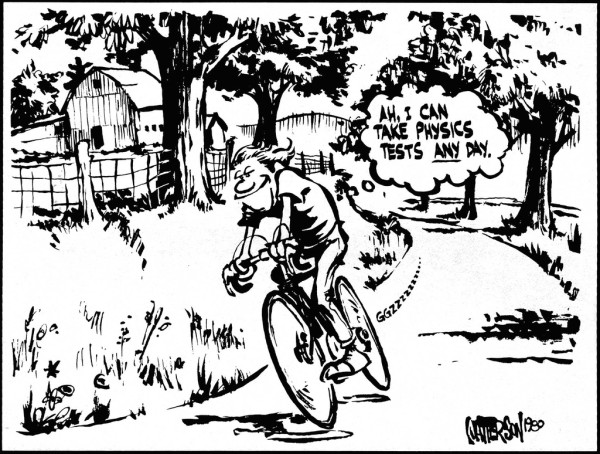For International Holocaust Memorial Day...
 |
As I said, the weather is very cold. I made it about 6 km when I realized that I needed more clothing. I went back and got another pair of warm-ups and went back out. The ride is about 30 km and as I said, I have not been able to ride that much recently, so I took my time and just paced myself with a moderate cadence. There is an odd change in the road that takes place after you go past this town. The road changes from a simple highway to a thinner, single lane road that travels beside the rail roads tracks. There is an old steel gate on either side of an old wooden railway bridge. The road and he tracks are covered with ice and the riding becomes difficult. On the other side of the bridge, the road is cracked and broken and no longer smooth.
It is here that I start to feel the pangs of sadness. I wonder if it is from the camp, some sixty years later, or is it from the living people who have been riding through this town to see it ever since.
The camp is about .5 km off of the main road and snow covers this way completely. I tried to fight through the snow on my bike and was pretty successful following the tire marks of some car. In the parking lot, there is a sign showing the layout of the two camps and the entrance to the park was at the end of the drive. The sign said that to the right was the sight of the penal camp and to the left, was the “extermination" camp. I put my bike on my shoulder and started to walk through the snow.
There was a fork in the path, where there were six large square granite blocks. On the first, was carved a map of the plan of Treblinka showing the three areas of the camp. This is followed by several more granite blocks; all etched in French, polish Russian, Hebrew, English and German with the words:
“On this site, between the years 1942 and 1943 existed and an extermination camp where over 800,000 Jews from Poland, Czechoslovakia, Bulgaria, France, Greece, the user, Romania and Germany. A few kilometers from here was a penal camp, where there was an armed revolt in 1943 which was bloodily thwarted by the Nazis. On this site, over 10,000 poles were murdered.”
I took an orange out of my bag and cut it into quarters with my knife. The cold had made it dry and icy. I ate in anyway, putting the peal in my pocket.
 |
I trudged through the deep snow to have a look at these stones. There is nothing written on them. I continued up the hill, the going was hard and my bike was getting heavy. At the top of the slope, was a sign detailing the layout of the camp. Behind me were more stones each etched with the names of the countries whose peoples had been killed here. Apparently I was standing at the greeting area. The trains would come from my left, along this spur, up this slope and the cars would unload the people here to be sorted. The layout of the camp read like this.
The commandant’s office
The barracks of the Ukrainian solders
The zoo
The storehouse where livestock was kept.
The SS' quarters.
The barracks for the female prisoners,
The barracks for the male prisoners
The latrine
The building where the possessions of the prisoners possessions were stored
The greeting area
The sorting area
The room where the possessions and properties of the people were sorted,
The execution yard,
A building used for executions, disguised as a hospital
The place where the men were sent
The place where the women were sent stripped and had their heads shaved.
The walkway to the gas chambers,
10 new gas chambers,
3 old gas chambers,
Crematoria pyres,
Burial pits,
Prisoner barracks.
 |
Just in front of the monolith, was a large cubic stone with a slanted face; it was covered with snow and with writing etched onto it. I brushed the snow away and read that there was written in polish, Russian, Hebrew English were the words:
Never again.
I noticed I could read the Russian. It was very quiet there. And it was very cold. I though of the prisoners here, in the wintertime, with nothing warm to wear but their prison pajamas. I don’t think camp was as disguised as Auschwitz was. Treblinka seemed very direct. I stood for a while there at the top of the hill looking at the stones. My feet were wet and cold from the snow. I walked back down the path to the greeting area and then turned right and followed the path through the snow back out of the park. I reread the stones again and then made my way back to the road. I started to ride back, stopping into a store and buying something to eat and drink. I ate outside in the cold and finished quickly so I could put my gloves back on. I rode the distance back without stopping.
 |
I guess it was simply the most hopeless fucking thing in the world. They would just get there by train, after all of the months of torture, murder, fear and starvation in the ghettos. I don't know if there would or could be anything inside them that still felt or believed anything. Was there hope, prayer...? As empty as I felt in that moment, on that hill, in the snow, in the silence, exactly as alone and as cold and tired and scared as I was, as I am, how much of a fool I am to even believe I could imagine this... I had the store, the bath, the soup, the extra pair of sweats... and they, only the faces of the guards... the prisoners... the barbed wire... and the smell... the stench from the fires... the end of the line was here.
Never again.























<< Home